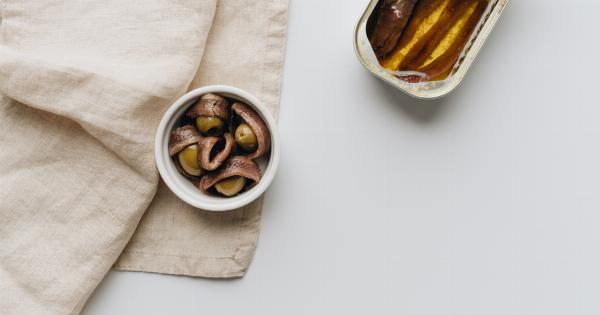Olive is a versatile and healthy fruit that is widely enjoyed for its unique taste and numerous health benefits.
Whether you’re using them in salads, pasta dishes, or enjoying them as a standalone snack, it’s important to ensure that the olives you consume are of high quality and safe for consumption. However, with counterfeit products becoming increasingly common in the market, it can be challenging to distinguish genuine olives from suspicious ones.
In this article, we will provide you with useful tips and guidelines on how to detect suspicious olives and guarantee the quality and safety of the olives you purchase and consume.
1. Check the Label and Packaging
When buying olives, examine the label and packaging carefully. Look for any signs of tampering or damage. Counterfeit products often have poor quality packaging with misspellings, distorted logos, or uneven labels.
Genuine olives usually have labels that are clear, well-printed, and free from any defects or inconsistencies.
2. Examine the Expiry Date
Always check the expiry date of the olives before purchasing. Expired olives may have an off smell, a change in color, or a slimy texture. These are clear indicators of spoilage. Avoid consuming any olives that have crossed their expiration date.
3. Observe the Color
The color of olives can vary depending on the type, but they should generally have a vibrant and natural appearance.
If you notice any unnatural discoloration, such as gray or brown patches, it could be an indication that the olives are spoiled or of poor quality.
4. Check for Mold or Fungus
Inspect the olives for any signs of mold or fungus. Mold growth on olives can be toxic and pose serious health risks. Avoid olives with visible mold or if the brine they are soaked in appears cloudy or discolored.
5. Smell the Olives
Take a whiff of the olives to detect any unusual or spoiled odor. Genuine olives have a fresh, fruity aroma.
If the olives emit a foul smell, similar to vinegar, ammonia, or rotten eggs, it’s best to steer clear of them as they are likely spoiled or have undergone improper preservation.
6. Assess the Texture
The texture of the olives plays a crucial role in identifying their quality. Fresh olives should be firm and have a satisfying texture. If the olives feel excessively soft, mushy, or slimy, it indicates spoilage or poor handling and storage conditions.
7. Taste Test
While it may not always be possible, tasting the olives can offer insights into their quality. If the olives have an unpleasant or off taste, it is a clear indicator that they are spoiled, rancid, or of inferior quality.
8. Analyze the Price
Counterfeit olives are often sold at significantly lower prices compared to genuine ones. While it’s understandable to seek a good deal, an unusually low price tag can be a red flag.
It’s essential to strike a balance between affordability and quality, ensuring you are getting genuine olives for a fair price.
9. Research the Brand and Supplier
Prioritize reputable brands and suppliers that have a positive reputation for producing high-quality olives. Conduct some research, read reviews, and check for certifications to ensure that you are purchasing olives from a reliable source.
Established brands are more likely to follow strict quality control measures, minimizing the chances of encountering suspicious olives.
10. Trust Your Instincts
Lastly, trust your instincts. If something feels off about the olives, even if you can’t pinpoint a specific reason, it’s better to err on the side of caution and not consume them.
Your intuition can often play a significant role in protecting yourself from potentially harmful or counterfeit products.
Conclusion
Being able to detect suspicious olives is crucial to ensure you are consuming safe and high-quality products.
By checking labels and packaging, examining the expiry date, observing the color, checking for mold or fungus, smelling the olives, assessing the texture, conducting a taste test, analyzing the price, researching the brand and supplier, and trusting your instincts, you can significantly reduce the risk of purchasing and consuming counterfeit or spoiled olives. Incorporate these guidelines into your olive purchasing routine and enjoy the delicious taste of authentic olives while keeping your health and safety a top priority.































